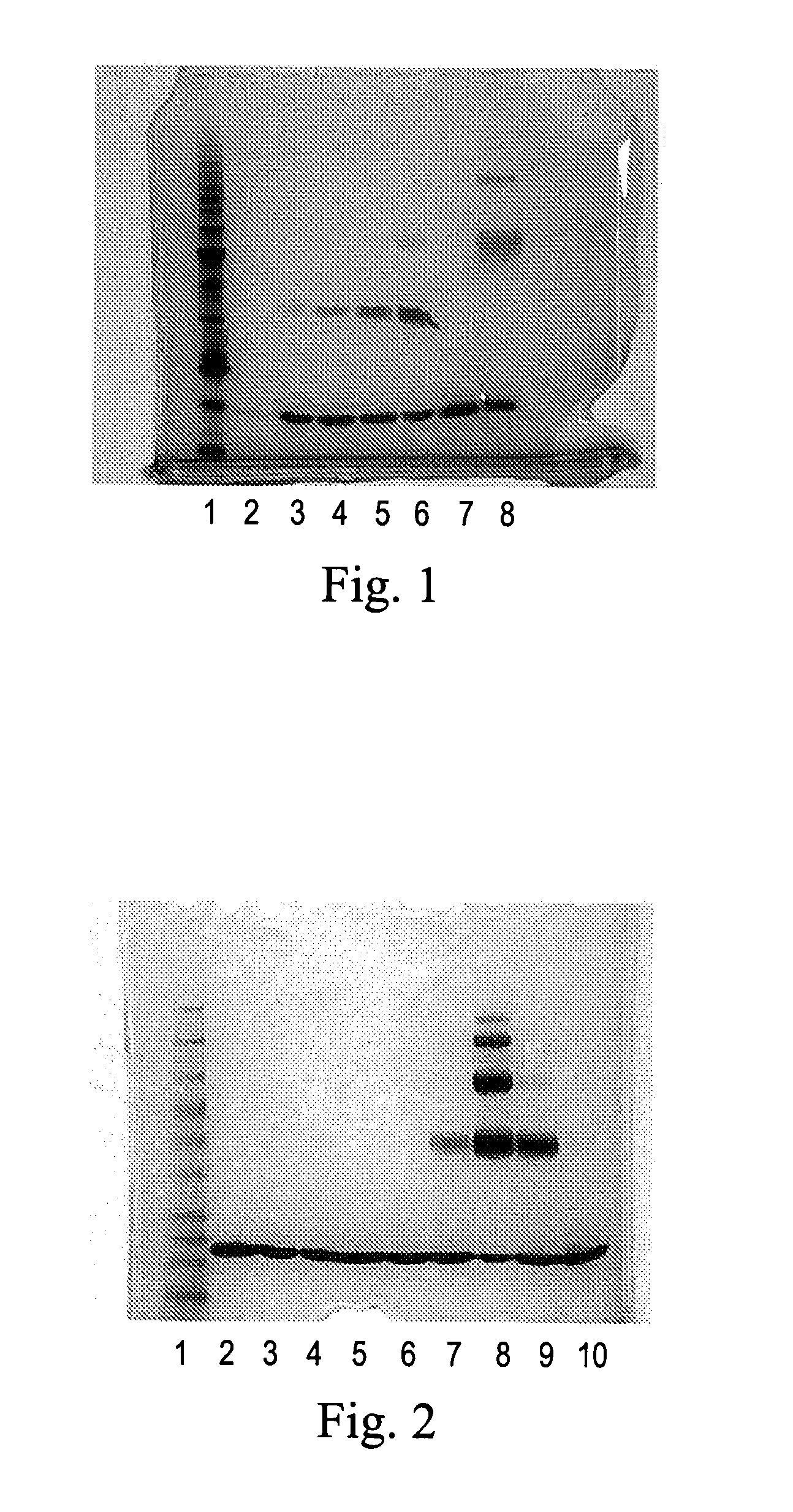Polymeric Alpha-Hydroxy Aldehyde and Ketone Reagents and Conjugation Method
a technology which is applied in the field of polymer aldehyde and ketone reagents and conjugation methods, can solve the problems of short circulating half life, immunogenicity, proteolytic degradation, and low solubility, and achieve the effect of reducing the chance of conjugation product degradation
- Summary
- Abstract
- Description
- Claims
- Application Information
AI Technical Summary
Benefits of technology
Problems solved by technology
Method used
Image
Examples
example 1
Preparation of mPEG5000-6-O-galactopyranose
Methoxy-polyethylene glycol (MW 5,000 Daltons) (M-PEG-OH, 5 kD, 8 g, 1.6 mmol) in 50 mL of anhydrous toluene was azeotropically distilled under reduced pressure at 60° C. on a rotary evaporator. The azeotropic distillation was repeated with 50 mL of anhydrous toluene and evaporated to approximately 25 mL. To the solution was added 10 mL of anhydrous methylene chloride and anhydrous triethylamine (0.39 mL, 2.8 mmol). The solution was stirred at room temperature under argon for 5 minutes and 0.179 mL of dry methanesulfonyl chloride (2.3 mmol) was added dropwise. The solution was stirred at room temperature under argon overnight. The mixture was evaporated under vacuum to remove methylene chloride and filtered over a bed of Celite to remove salts. The Celite was washed with additional toluene and the combined filtrate was evaporated under vacuum. The solids were dissolved in approximately 15 mL of methylene chloride and precipitated on ice by ...
example 2
Preparation mPEG5000-3-O-D-glucose (2)
mPEG-OMs (5 kD, 7.7 g, 1.5 mmol), prepared as described in Example 1, in 50 mL of anhydrous toluene was azeotropically distilled under reduced pressure at 60° C. on a rotary evaporator. The azeotropic distillation was repeated with 60 mL of anhydrous toluene and evaporated to approximately 50 mL. To the solution was added 1.35 g of diacetone-D-glucose (5.2 mmol) and 0.2 g of sodium hydride 60% dispersion in mineral oil (5.0 mmol). The reaction was heated at 75° C. with stirring overnight under an argon atmosphere. The reaction mixture was cooled to room temperature, diluted with methylene chloride and filtered over a bed of Celite. The Celite was washed with additional methylene chloride and the combined filtrate was evaporated under vacuum. The solids were dissolved in 15 mL of methylene chloride and precipitated by the addition of 95 mL isopropanol and 95 mL diethylether at 0° C. The precipitated product was filtered off, washed with diethylet...
example 3
Preparation and Conjugation of a “Self Catalyzing” Reagent (3)
A. Preparation of 2-hydroxy-3-amino-4-(2-imidazoyl)-butanal
The following synthetic scheme is employed to prepare the title compound (shown in protected form):
This compound is reacted with mPEG-SPA (the N-hydroxy succinimidyl ester of methoxypoly(ethylene glycol) propionic acid) to provide the amide-linked PEGylated reagent 3 (second compound in the scheme below).
This reagent can be reacted with a protein, according to procedures described above, to give the stable keto-amine conjugate shown.
PUM
| Property | Measurement | Unit |
|---|---|---|
| structure | aaaaa | aaaaa |
| water soluble | aaaaa | aaaaa |
| structure IV | aaaaa | aaaaa |
Abstract
Description
Claims
Application Information
 Login to View More
Login to View More - R&D
- Intellectual Property
- Life Sciences
- Materials
- Tech Scout
- Unparalleled Data Quality
- Higher Quality Content
- 60% Fewer Hallucinations
Browse by: Latest US Patents, China's latest patents, Technical Efficacy Thesaurus, Application Domain, Technology Topic, Popular Technical Reports.
© 2025 PatSnap. All rights reserved.Legal|Privacy policy|Modern Slavery Act Transparency Statement|Sitemap|About US| Contact US: help@patsnap.com



